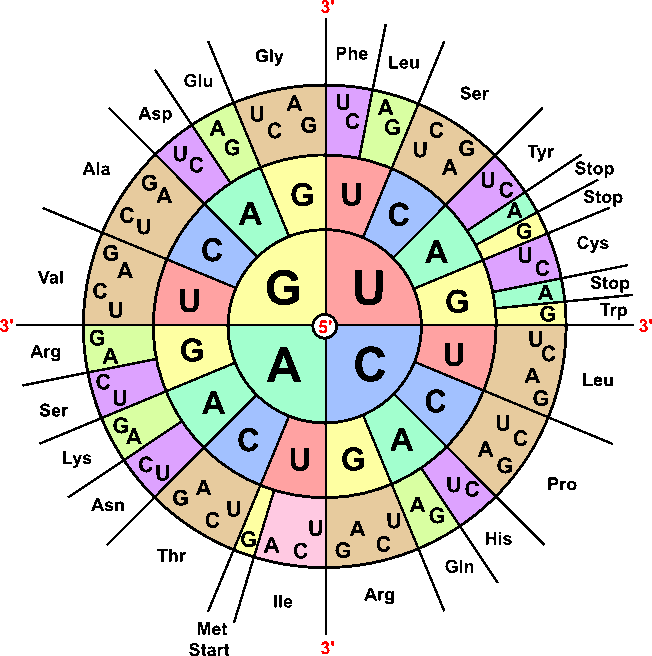How does DNA code for proteins?
1 Answer
The DNA structure includes the following nitrogenous bases: Adenine, Guanine, Cytosine, and Thymine . These are ordered and matched so that an individual's genetic information is stored in this form.
Proteins are macromolecules made of aminoacids . So, a protein is a chain of aminoacids. An aminoacid is made of even smaller units called codons . The codons are coded in the nitrogenous bases mentioned earlier.

In the center of the circle above, G stands for Guanine, A for Adenine, C for Cytosine, and U for Uracil . The reason why there is Uracil is because Thymine, which is in the DNA, is replaced by Uracil once the DNA is "translated" into RNA.
Begin in the center of the circle, with A, for example, then choose G, then choose A. AGA, or the sequence of codons Adenine-Guaninge-Adenine, forms the aminoacid "Arg" (Arginine) , as seen in the circle.
So, different orders of codons will lead to different aminoacids. Different chains of aminoacids will form different proteins.

